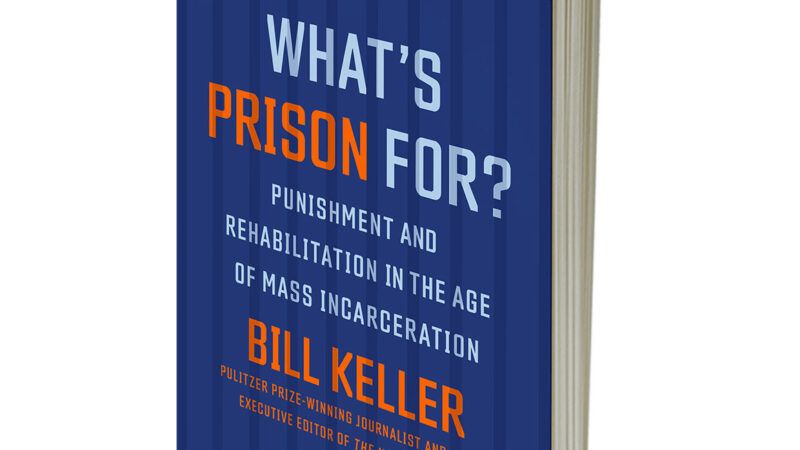Review: Is Prison for Rehabilitation or Punishment?
High recidivism rates are not surprising when life in prison features the same factors that drive crime.

The standard answer to the question posed by the title of Bill Keller's new book, What's Prison For?, cites four goals: punishment, deterrence, incapacitation, and rehabilitation. But as Keller shows, that last goal is typically treated as an afterthought in the United States.
Given that 95 percent of prisoners will eventually be released, Keller argues, policy makers should pay more attention to whether what happens behind bars increases or decreases former inmates' chances of leading peaceful, productive lives when they get out.
In 2014, after spending nearly four decades at The New York Times, Keller became the founding editor in chief of The Marshall Project, a journalistic outlet focused on criminal justice. His book draws heavily on his colleagues' work, along with his own research and interviews, to make the case that governments routinely squander the opportunity to improve the prospects of people they view as dangerous enough to lock up for years or decades.
The case for a stronger emphasis on rehabilitation rests on practical as well as humanitarian concerns. High recidivism rates are not surprising when life in prison features the same factors that drive crime: social isolation, pervasive powerlessness, and economic distress. The alternatives Keller considers include meaningful educational opportunities, "restorative justice" programs that aim to foster empathy and responsibility, and amenities that afford more dignity and privacy than U.S. prisons generally allow.
Such options, which often involve spending more taxpayer money, may seem like a hard sell for budget-conscious, law-and-order politicians. But a proper analysis has to take into account the current system's enormous social and economic costs, including the preventable crimes that occur when rehabilitation gets short shrift.
Show Comments (16)